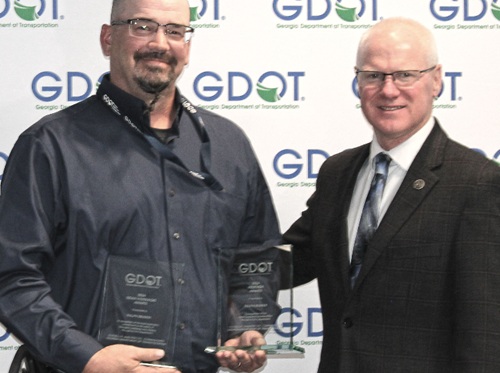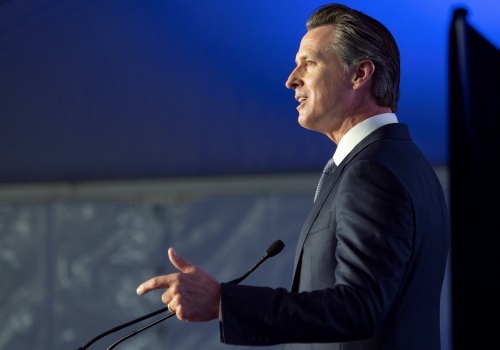Governor Gavin Newsom (D) (seen above) recently unveiled a $100 billion state economic recovery plan, dubbed the California Comeback Plan, which includes an $11 billion outlay for transportation needs.
[Above photo via the California Governor’s Office]
“Every Californian has been impacted by this pandemic, and the sacrifices we’ve all made this past year have resulted in a historic surplus – I’m here to announce that we’re investing it in you,” the governor said in a statement.

“California’s economic recovery will leave nobody behind, that’s why we’re implementing the nation’s largest state tax rebate and small business relief programs in history, on top of unprecedented investments we’re making to address California’s most persistent challenges,” he added. “This is a jumpstart for our local economies, and it’s how we’ll bring California roaring back.”
The focus areas of the plan include providing $12 billion for those “hit hardest” by the COVID-19 pandemic; $12 billion to confront the state’s homeless crisis while addressing housing affordability issues statewide; transforming public schools; and investing in infrastructure.
It also proposes to help combat wildfires with new $2 billion in funding; provide $1.3 billion to prepare for extreme heat, sea-level rise and environmental justice priorities like oil well capping, toxic site clean-up and pollution control; and provide $5.1 billion in drought support, water supply and natural landscape projects around the state.

The plan specifically includes $11 billion to build a “modernized and sustainable” transportation system for the next century, Gov. Newsom noted. That includes investments in roads, bridges, high-speed rail, ports and public transportation, as well as infrastructure projects related to the 2028 Olympic Games that California is hosting.
The plan also proposes a $7 billion investment to expand broadband infrastructure statewide while increasing access and affordability. The governor added the plan aims to help build out a statewide middle mile network for improved access in underserved regions, including rural areas, and allows local governments and tribes to access last-mile funding, which connects broadband to individual homes.

The plan also includes a $3.2 billion package to “accelerate” California’s ability to reach zero-emission vehicle goals established in part by a Climate Action Plan for Transportation Infrastructure issued by the California State Transportation Agency in March.
CalSTA’s climate plan builds on executive orders signed by Gov. Newsom in 2019 and 2020 that seek to reduce greenhouse gas emissions from the state’s transportation sector.
“We must dramatically reduce pollution throughout all aspects of the transportation sector to halt the climate crisis – and there is no time to lose,” explained CalSTA Secretary David Kim in a statement.
“This plan calls for increased investments to support zero-emission transit, freight and rail as well as projects that vastly expand safe access to walking, biking and transit to reduce our dependence on driving and promote healthy communities – particularly in low-income neighborhoods of color that often bear the brunt of pollution and lack access to affordable mobility options,” he said.
 States
States
Georgia DOT Foreman Receives Two Heroism Awards
January 2, 2026 States
States

